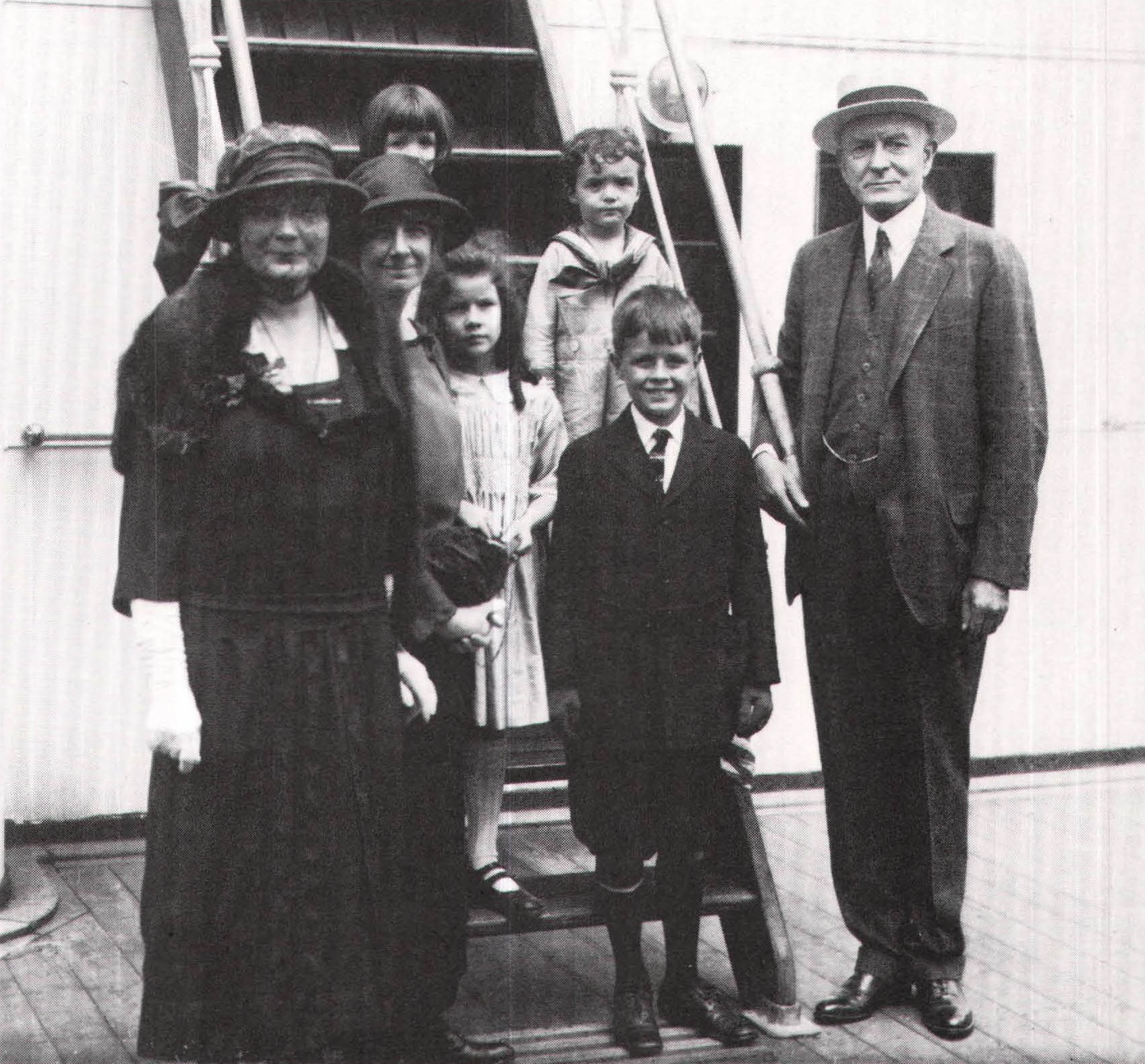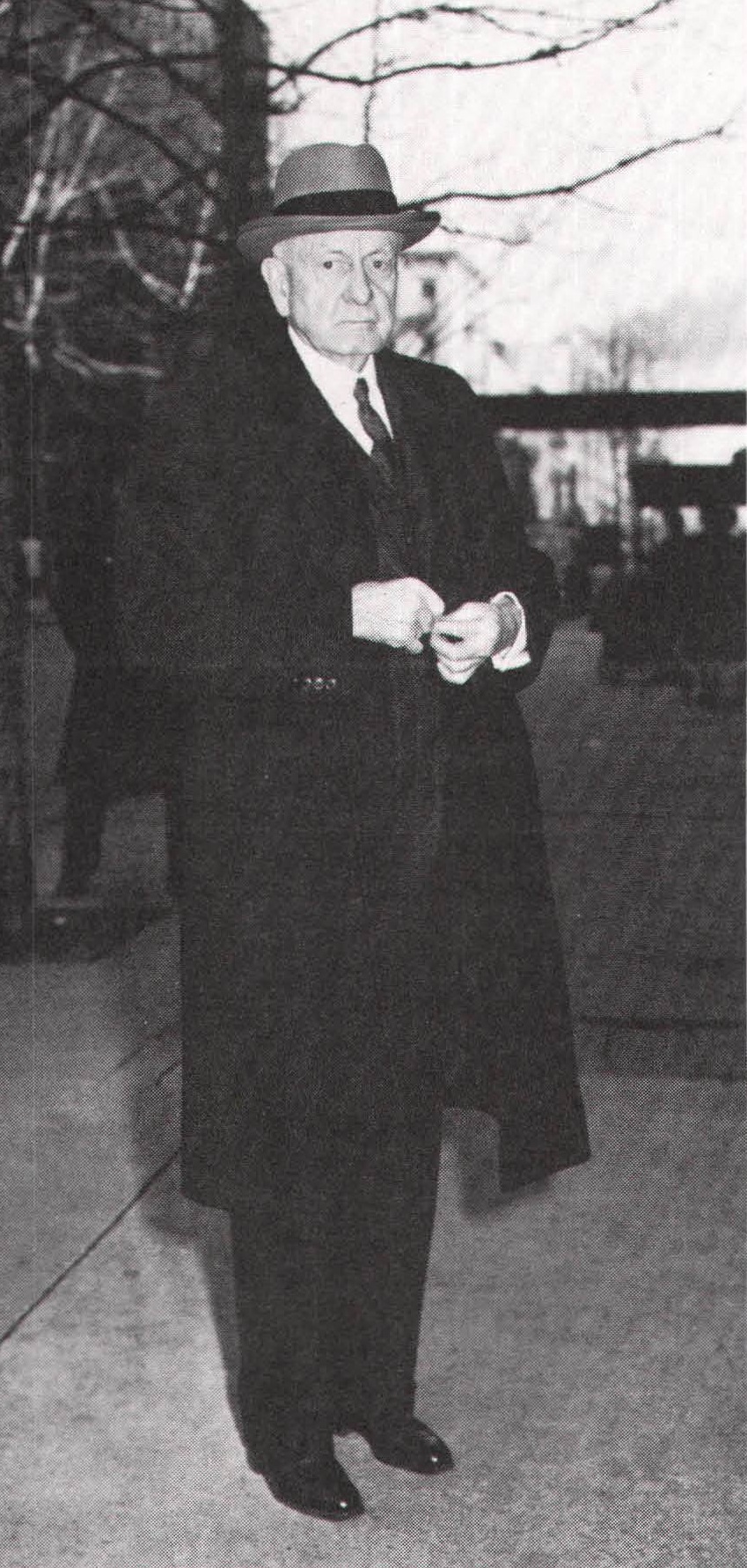
Tom Watson and his wife, Jeannette, had four children, two boys and two girls. Brought up in the traditional fashion, the girls got married, settled down, and had families of their own. Thomas Jr., born in 1914, and Arthur, who came along five years later, were expected to join IBM. It was generally understood that Tom, as the oldest son, would inherit his father’s mantle while Dick, as he was called by family and friends, would play a lesser role. “The company,” Tom reflected years later, “is in the family unconscious.” Tom and Dick were, in effect, IBM’s youngest trainees, and Watson often took them to company conventions, where the boys fidgeted in their little suits, joined in the singing, and listened politely to the speeches.
Tom entered Brown University, in Providence, Rhode Island, in 1933. Tall, athletic, outgoing, good-looking, he was more of a sporting playboy than a conscientious student. His grades were poor and his attendance spotty; like his father, Tom wasn’t particularly interested in intellectual matters. He sowed his share of wild oats at Brown and, much to his very serious and sober father’s annoyance, spent most of his time partying and drinking. He took flying lessons and, against Watson’s wishes, bought a small plane. Although Tom lacked ambition and direction, he was an amiable and intelligent young man, a rich man’s son who, all things considered, wasn’t a bad specimen of his breed.
As his graduation drew near, Tom began giving more thought to his future. Given his own head, he probably would have become a pilot, but such a decision required more independence of mind than he possessed. Chiefly out of respect for his parents’ wishes, Tom joined the company after leaving Brown in 1937. (Dick joined IBM five years later, after graduating from Yale.) Naturally, Watson was overjoyed with his son’s decision. As he wrote Tom in a letter that presumed more of his son than, as it turned out, the young man could give: “The thing that I am looking forward to now with so much pleasure is having you to counsel with and help me plan my future programs along various lines. I suddenly realize that now I have somebody in my life upon whom I can look with confidence.”
Tom breezed through IBM’s training courses – as Watson’s son he could do no wrong – and was assigned to a choice territory in downtown Manhattan, where he didn’t have to pound pavement for customers. Orders were sent his way merely by virtue of his kinship to the boss, and Tom made the Hundred Percent Club during his first year. And he filled his quota on the first working day of the following year, which left plenty of time for flying, yachting, nightclubbing, and other extracurricular activities. Fortunately, Tom was a modest young man, with few illusions about the ease of success. As he confessed in his notes for a speech to a New York business club in 1957:
There is a reason for my success. You know it… I want you to know that I know it. Made unusually good choice of father so I always had a friend in the firm…. I have never claimed to be a great salesman… but I do claim to be the son of one of the greatest salesmen that ever lived. I appreciate the honor you do him today in recognizing me. The IBM Company is his monument and any sales sense that I have has come from him.
In 1940, three years after he had joined IBM, Tom was drafted. Commissioned a second lieutenant, he became a transport pilot in the Army Air Corps and spent the next five years flying generals and other VIPs between the United States and Europe. He saw a small amount of action and, like most men who have been called to war, was changed by the experience. By 1945, Tom was a lieutenant colonel and a senior pilot, a husband and a father – a mature, responsible, strong individual, accustomed to taking and giving orders. Now thirty-one years old, he was eager to return to IBM and prove himself. “Frankly I can hardly wait to begin,” he wrote to his father shortly before returning to the company in January 1946. “When I think of the difference in my general outlook now as against the 1937-1940 period, I am convinced that I am now at least seventy-five percent better equipped mentally to follow in your footsteps as I intend to do.”

At seventy-two the elder Watson was healthy and vigorous, and still fully in control of IBM. But he had lost his passion for change and was more interested in preserving than expanding the company. Although he had no intention of stepping aside, the time had clearly arrived for him to begin planning the succession, and he began grooming his son for the presidency. Instead of being sent back to a sales office upon his return from the war, Tom was admitted to the executive suite and appointed an assistant to Charles Kirk, a forty-three-year-old vice president and one of Watson’s most trusted executives. Along with John Phillips, the firm’s secretary and treasurer, Kirk, a driving and indefatigable man, supervised the company’s day-to-day operations.
As Kirk’s right-hand man, Tom got a crash course in managing IBM. “He had a large desk and I simply had a chair pulled up to the edge of what he did,” Tom recalled. Kirk familiarized him with the company’s operations, introduced him to the key executives, and briefed him on research projects, including those related to computers. Tom learned fast and his father moved him up the ladder, giving him a vice-presidency and a seat on the board in 1947. Even so, Tom was very much a junior executive, and it would be a long time before he qualified for the top post. Meanwhile, Watson retired into the background and increasingly shifted his authority to Kirk, Phillips, and Tom.
But then, in the summer of 1947, Kirk died of a heart attack, upsetting the timetable for the transition. Watson called Phillips into his office and asked him to assume most of Kirk’s duties, an assignment that Phillips, a retiring man content with his position, did not relish. Two years later, Watson assumed the chairmanship, a post that he had abolished after Fairchild’s death in 1921, and elevated Phillips to the presidency. Phillips’s appointment was universally understood to be an interim one, a stopgap measure until young Tom was ready to take control. Finally, Tom was promoted to the executive vice-presidency. He was the third highest executive in the firm, only a step away from the throne.